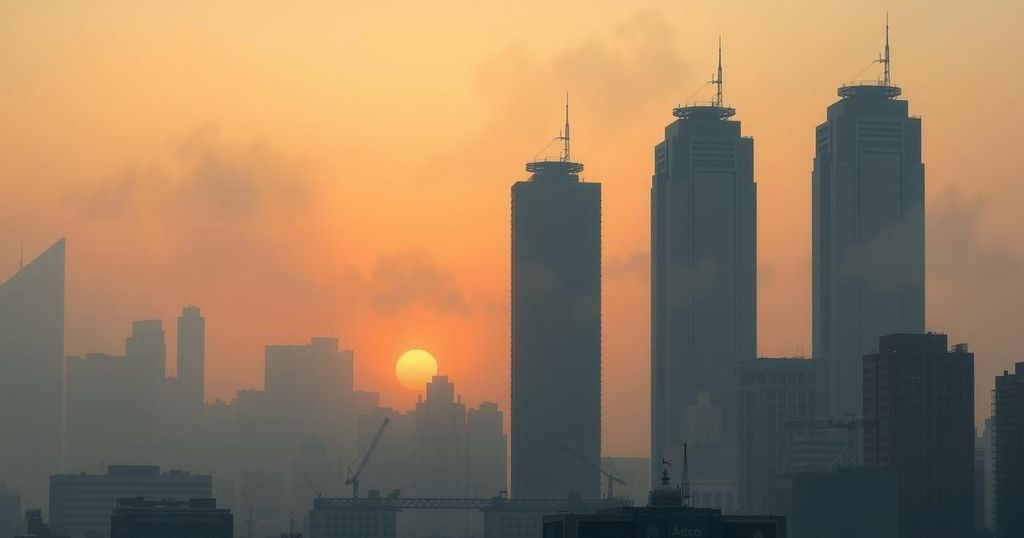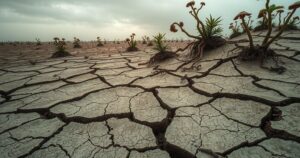New Study Reveals Widespread Air Pollution Crisis in Asia

A recent IQAir study indicates that all but one of the top 20 most polluted cities are in Asia, mainly India, marking a significant health concern. The report highlights the dangers of PM2.5, which exceeds WHO guidelines, affecting millions. While some countries like China show slight improvements, others remain critically polluted, necessitating concerted governmental efforts to address air quality issues.
The recent study by IQAir revealed that all but one of the world’s top 20 most polluted cities are located in Asia, with 13 cities in India, four in Pakistan, and one each in China and Kazakhstan. The only city outside of Asia to make the list is N’Djamena, the capital of Chad, which was identified as having the worst air pollution. In North America, the cities with the most pollution were all found in California.
The report focused on PM2.5, a hazardous form of fine particulate matter originating from various sources, including fossil fuel combustion, dust storms, and wildfires. Due to its minuscule size, PM2.5 can enter the lungs and bloodstream, posing serious health risks such as respiratory issues, chronic kidney disease, and even increased chances of cancer and stroke. The World Health Organization (WHO) states that annual PM2.5 levels should not exceed 5 micrograms per cubic meter.
Byrnihat, an industrial locality in northeast India, recorded an alarming PM2.5 level of 128.2, far exceeding the WHO standard. “It feels very sad and helpless that Byrnihat keeps topping the list,” stated Suman Momin, a resident, attributing the problem to local factories and construction activities. She voiced her struggles with poor air quality, saying, “I do not leave home without a mask.”
India’s capital, New Delhi, is noted as the world’s most polluted capital for the sixth consecutive year, with a PM2.5 concentration of 91.8. Additional cities like Faridabad and Gurugram also contributed to India’s status as the most polluted country, despite a drop in overall rankings. The report observed that air pollution significantly affects life expectancy, reducing it by an estimated 5.2 years.
Bangladesh and Pakistan ranked second and third, respectively, in global PM2.5 pollution levels, while China showed slight improvements in its air quality, notably in major cities. Although the country remains the largest CO2 emitter, it is actively addressing air pollution through investments in renewable energy. However, concerns have been raised regarding plans to construct new coal power plants.
The IQAir report revealed that all top 20 polluted cities exceeded WHO guidelines by over ten times, prompting urgent action for better air quality monitoring, especially in regions like Southeast Asia where data gaps exist. Frank Hammes, CEO of IQAir, emphasized the importance of air quality data in saving lives and guiding public health policies.
Among the cities analyzed, only 17% met WHO air quality standards, with California cities like Ontario and Huntington Park recognized for having the worst air pollution in North America. However, the U.S. experienced a significant reduction in PM2.5 levels last year, aided by extensive air quality monitoring systems. The report calls for governments to invest in renewable energy and enhance emission regulations to combat air pollution effectively. Momin echoed a plea for government action: “We want the governments to do more, come together and work for us.”
In conclusion, the recent IQAir report highlights the severe air pollution crisis predominantly affecting Asian cities, particularly those in India. The health implications of PM2.5 are alarming, prompting calls for comprehensive governmental interventions. Countries like China are making strides, yet challenges remain, with significant data gaps hampering efforts in regions such as Southeast Asia. The situation necessitates immediate action to improve air quality and public health, as voiced by local residents such as Suman Momin.
Original Source: www.cnn.com






